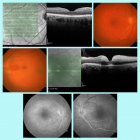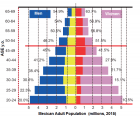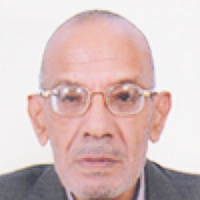Table of Contents
Bimatoprost Ophthalmic Solution (BOS) 0.3 mg w/v for 1 Open Trial of Long-term Preventive Therapy of Migraine in 3 patients with Pathophysiologic Shift from Brain to Eye
Published on: 9th November, 2023
Known since antiquity, migraine is a complex primary disorder, an episodic painful Autonomic Nervous System (ANS) storm, generally following the stress/post-stress phase. Despite exhaustive study of neuropeptides, neurochemicals, molecules, neurogenetics, neuroimaging along with animal and human experiments over the last 50 years, the scientific basis of migraine remains unknown. Straddling eight decades from Cortical Spreading Depression (CSD) to Calcitonin-Gene Related Peptide (CGRP) and its antagonists, exponentially increasing data have failed to create a gestalt synthesis. This article lays cohesive and robust fundamental principles for the comprehension and management of migraine. The continuum between migraine and non-congestive Primary Open-Angle Glaucoma (POAG), Normal Tension Glaucoma (NTG), or Low-Tension Glaucoma (LTG) is advancing. The case of sustained remission of migraine attacks (> 75%) over 3 years - 5 years with ocular hypotensive topical Bimatoprost Ophthalmic Solution (BOS) 0.3% in an N-of-1 trial in 3 patients with refractory migraine is presented. A cause-effect-adaptive process underlies the ANS-stress/post-stress-linked biology of migraine. Vasopressin-serotonin-norepinephrine ‘homeostatic-adaptive system’ Lowers Intraocular Pressure (IOP), while enhancing anti-stress, antinociception, vasomotor, and behaviour control functions, thereby selectively decreasing algogenic neural traffic in the ophthalmic division of trigeminal nerve (V1), and, raising the threshold to develop migraine. Striking migraine headache-aborting feature of vomiting is also likely linked to a several hundred-fold increase in arginine-vasopressin secretion. Eye-cover tests and self-ocular digital displacement are essential to studying the visual aura. Real-time physical displacement of Scintillating Scotoma (SS) and floating ‘stars’ is reported. The basis of spontaneous onset and offset, self-limited duration of migraine attacks, as well as female preponderance, and age/menopause decline in prevalence, are elucidated. Intraocular implants with long-term ocular hypotensive effects, including bimatoprost, are the future of migraine management. Controlled trials are required to establish the migraine-preventive effect of topical bimatoprost, a revolutionary advance in neuroscience.
Application of Nonlinear Dynamic Models of the Oculo-Motor System in Diagnostic Studies in Neurosciences
Published on: 30th October, 2023
The purpose of this work is to implement methods and develop tools for nonlinear dynamic identification of the Oculomotor System (OMS) “input-output” in the form of Multidimensional Transient Functions (MTF) based on eye tracking data and their use in an information system for diagnosing the psychophysiological state of a person. The object of the study is the process of diagnosing the psychophysiological state of an individual based on innovative eye-tracking technology. The subject of the research is computational algorithms and software for determining diagnostic features based on identification data of compulsory medical insurance in the form of MTF, constructing a Bayesian classifier using machine learning in the established space of the most informative features. A methodology has been developed and implemented for the experimental study of human compulsory mental health using innovative eye-tracking technology to record compulsory mental health responses to test visual stimuli. The obtained empirical data from input-output studies are used for the identification of OMS based on Volterra polynomials. Experimental studies of compulsory medical insurance of respondents were carried out before and after the working day. Based on the data obtained using the Tobii Pro TX300 eye tracker, the transient functions of the first, second, and third orders of the OMS were determined. Variability of second and third order transient functions was revealed for different psychophysiological states of the respondent (normal or fatigue). Thus, it seems appropriate to use MTF in diagnostic studies in the fields of neuroscience and psychology. Information technology for diagnosing human psychophysiological conditions has been further developed through the use of compulsory health insurance information models based on Volterra polynomials as a source of primary data. This allows for an increase in the accuracy of OMS modeling and, consequently, enhances the reliability of diagnosis within the framework of the proposed heuristic features. A set of heuristic features is proposed, which are determined using integral and differential transformations of the MTF OMS. The information content of individual features and all possible combinations of them in pairs was studied using the Probability of Correct Recognition (PCR) indicator. Two-dimensional feature spaces with the maximum PCR value (0.938) were identified during the diagnosis of a person’s psychophysiological state.
The Neuroprotective Role of TERT Influences the Expression of SOD1 in Motor Neurons and Mouse Brain: Implications for fALS
Published on: 14th October, 2023
Amyotrophic lateral sclerosis (ALS) disease is characterized by degeneration of motor neurons and elevation of brain oxidative stress. Previous studies demonstrated the neuroprotective effects of Telomerase reverse transcriptase (TERT) from oxidative stress. We showed that increasing TERT expression in the brain of the Tg hSOD1G93A mouse ALS model attenuated the disease pathology and increased the survival of motor neurons exposed to oxidative stress. How TERT increased the survival of motor neurons exposed to oxidative stress is not yet clear. Here we investigated the consequence of TERT depletion in motor neuron cells under normal and oxidative stress conditions and in mouse brains of TERT knockout mice, on the expression and activity of SOD1 and catalase enzymes. Depletion of mouse TERT caused mitochondrial dysfunction and impaired catalase and SOD1 activity. Compensation with hTERT restored the activity of SOD1. SOD1 expression increased in the brain of TERT KO and in ALS mice and decreased in the brain of WT mice treated with telomerase-increasing compounds. We suggest that the ability of TERT to protect neurons from oxidative stress affects the expression and activity of SOD1, in a TERT-dependent manner, and supports the notion of TERT as a therapeutic target for neurodegenerative diseases like ALS.
Effect of Balance Exercises with Smart Phone Based Virtual Reality Programme on Balance in Stroke Patients
Published on: 28th September, 2023
Background and objectives: A stroke is a neurological deficit, caused due to vascular changes. Impaired postural control and balance impairments in post-stroke patients are associated with a high risk of falls among stroke patients. The perturbation-based balance training is mainly used in older adults and balance impairment. Virtual reality (VR) as a novel technology is rapidly becoming a popular intervention for improving balance. VR can visualize computer-generated environments with a full field of view through Head-mounted displays (HMD-VR). This study was conducted to assess and investigate the effect of balance exercises with smartphone-based virtual reality programs on balance in stroke patients.Methods: This was a randomized single-group pre and post-test study design. 30 subjects met the inclusion criteria and were enrolled, assigned, and received intervention. Subjects were given perturbation-based balance exercises and smartphone-based virtual reality along with conventional physiotherapy. The intervention protocol was for 6 days/week for 4 weeks period. Results: Following 4 weeks of intervention showed improvement in postural control and balance which was assessed using BBS, TUG, VR BESS, BESTest, and SIS 3.0. Paired t-test was used to differentiate the mean significance. The mean pre to post-intervention difference is 12.6 with a p - value < 0.05. TUG score improved from pre to post-intervention difference is 1.443 with a p - value < 0.05. VR BESS score improved from pre to post-intervention difference is 10.266 with a p value < 0.05. The mean BESTest pre to post-intervention difference is 11.467 with a p - value < 0.05. SIS 3.0 score improved from a pre to post-intervention difference is 20.33 with p - value < 0.05. The result of this study showed a highly significant difference in pre and post-treatment.Conclusion: The study concludes that perturbation-based balance exercises with smartphone-based virtual reality programs are a useful adjunct to improving balance in stroke patients along with conventional physiotherapy.
Stroke Mimics: Insights from a Retrospective Neuroimaging Study
Published on: 27th September, 2023
Objectives: The study’s goals are to evaluate the management of Stroke Mimics (SMs), conditions with stroke-like symptoms but non-vascular origins. It seeks to avoid the unnecessary intravenous thrombolysis, the target therapy delays and determine the best SMs diagnosis approach.Materials and methods: A review was conducted of all patients admitted to the Emergency Department under a “stroke code” from January 1, 2018, to January 31, 2019. Anamnestic and clinical data, along with information on neuroimaging protocols and findings, were collected. Advanced MRI sequences, such as Arterial Spin Labeling (ASL) MR perfusion and MR spectroscopy, were revised to confirm the diagnoses.Results: 513 stroke codes were found; a neurovascular disease was diagnosed in 414 cases: 282 ischemic strokes and 73 intracranial hemorrages and 59 TIAs. The 99 SMs included, 13 infections, 12 syncopes, 11 epileptic seizures, 11 hemodinamic conditions, 10 tumors, 9 metabolic disorders, 9 diziness, 7 migraines, 4 drug/alcohol intoxication, 3 functional disorders, 3 acute hydrocefalus, 2 multiple sclerosis, 2 arteriovenous malformations, 1 spinal cord compression and 2 unexplained conditions. Specific neuroimaging findings were evaluated for all cases. Positive and negative predictive values of clinical diagnosis of SM were respectively 0.23 and 0.35. 125 SM patients underwent MRI examination, 40 of which within 3 hours from the activation of stroke code. Advanced MRI sequences as ASL, MR perfusion, MR spectroscopy were used to reach the correct diagnosis.Conclusions: Advanced multimodal MRI can be a valuable tool in the assessment of, particularly in cases where conventional imaging techniques such as DWI-FLAIR mismatch are inconclusive. The novelty of this retrospective study is to demonstrate that the consistent use of arterial spin labeling perfusion in cases with stroke code leads to a rapid and accurate diagnosis of SMs. The implementation of an MRI-based pathway can expedite the diagnosis and treatment of underlying non-vascular causes such as SMs.
Interconnection and Communication between Bone Marrow - The Central Immune System - And the Central Nervous System
Published on: 25th September, 2023
Bone marrow and the central nervous system are both protected by bone. The two systems are interconnected not only structurally but also functionally. In both systems specialized cells communicate through synapses. There exists a tridirectional communication within the neuroimmune network, including the hormonal system, the immune system, and the nervous system. Bone marrow is a priming site for T cell responses to blood-borne antigens including those from the central nervous system. In cases of auto (self) antigens, the responses lead to immune tolerance while in cases of neo (non-self) antigens, the responses lead to neoantigen-specific T cell activation, immune control, and finally to the generation of neoantigen-specific immunological memory. Bone marrow has an important function in the storage and maintenance of immunological memory. It is a multifunctional and very active cell-generating organ, constantly providing hematopoiesis and osteogenesis in finely-tuned homeostasis. Clinical perspectives include mesenchymal stem cell transplantation for tissue repair within the central nervous system.
The Dynamics of Eating Behavior Disorders and the Level of General Psychological Adaptation in Bodybuilding and Fitness Athletes
Published on: 30th August, 2023
Knowing the psychological traits and clinically relevant symptoms for the development and maintenance of Eating Behavior Disorders (EDD) in bodybuilding and fitness athletes is a necessity for early intervention and the elimination of stressors that contribute to improving sports performance and quality of life.The aim of the study: To know the dynamics of EDD and the level of general psychological adaptation in athletes who practice bodybuilding and fitness according to sports gender and age.By applying the Inventory of Eating Disorders, EDI-III on 30 participants, bodybuilding and fitness practitioners, aged between 19 and 53, of which 21 are male and 9 are female, psychological traits were investigated relevant (low self-esteem, perfectionism, asceticism, fear of maturity, interpersonal, emotional problems, exaggerated control, and others) in order to know the level of distress and the presence of clinically relevant symptoms for the development and maintenance of EDD (the desire to being thin, bulimia, body dissatisfaction)We concluded that most of the athletes fall within the limits of the threshold values established for the evaluated scales, 30% of the athletes (3 female athletes and 6 male athletes), obtained scores rated above the threshold on at least one of the clinical scales, which means that the risk of EDD is present in some athletes. The average of the investigated psychological scales calculated for the rated scores to establish the level of general psychological adaptation does not exceed the specified threshold for each investigated dimension separately, except for the asceticism, interpersonal problems, and exaggerated control scales. Female athletes have greater psychological balance than male athletes and lower risk of ED than male athletes, important aspects of personality and mental health in psychological training as a screening tool in the process of optimizing the effectiveness of bodybuilding and fitness training.
Update in the Understanding, Diagnosis, and Management of Sturge Weber Syndrome: Case Report
Published on: 24th August, 2023
Sturge-Weber Syndrome (SWS) is a congenital, vascular, neurocutaneous, uncommon disease associated with facial angiomas port wine birthmark (PWB) or “nevus flammeus”, cerebral vascularity alterations (leptomeningeal vascular malformation), and ocular disorders. It is the third most common neurocutaneous syndrome after neurofibromatosis and tuberous sclerosis. GNAQ R183Q is the most frequent related mutation, caused by a postzygotic, somatic, gain-of-function. 75% of patients present seizures during the first year of life, mainly focal motor seizures, with or without consciousness impairment.We present the case of a 33-year-old female with a diagnosis of SWS, with refractory seizures that started at 4 months of age. In this admission, she presented upper and lower respiratory tract infections that culminated in a convulsive status epilepticus (CSE), the reason for which she required sedation and advanced airway management with adjustment of the anti-seizure medication (ASM). An electroencephalogram (EEG) was performed that reported epileptic activity, as well as an imaging study with data suggestive of calcification in the frontal and right parietal region, compatible with vascular malformation.
Synergistic Approach: Photobiomodulation, Neuromodulation, and Drug Therapy in Neuropsychiatry. A Promising Strategy to Enhance PBM Adoption and Neurotherapy Efficacy
Published on: 18th August, 2023
Photobiomodulation (PBM) is an effective method for treating neuropsychiatric diseases, yet its universal acceptance and utilization remain constrained. In this Letter to the Editor/Expert Opinion, we address the challenges confronting PBM researchers and pioneers, striving to establish universal confidence in its exclusive application for neuropsychiatric patient care. Despite encouraging animal experiments and selecting positive human clinical trial outcomes, PBM’s widespread acceptance of PBM is hindered by factors including limited clinical studies and clashes with established therapies, such as drug therapy and psychotherapy.To overcome these obstacles and broaden PBM’s adoption and application of PBM in neuropsychiatry, we propose a combinatorial therapy approach. By integrating PBM with interventions such as Cognitive Behavioral Therapy (CBT) or drug therapy, a cumulative effect can be attained, benefiting both patients and therapists. Patients gain access to diverse treatment options and experience synergistic effects of combined therapies, thereby enhancing outcomes. Therapists benefit from expanded intervention choices and improved quality of patient care.This study introduces a novel strategy of amalgamating PBM with recognized interventions, such as CBT and drug therapy, to address existing challenges. This combined approach offers a practical solution to augment PBM acceptance and usage in the realm of neuropsychiatry.To endorse this strategy, a shift in the research direction is imperative. Future studies should investigate the amalgamated use of PBM with other neurointerventions, such as CBT or drug therapy. Robust clinical trials contrasting groups like “PBM + CBT” and “PBM (sham) + rTMS” are vital to persuade clinicians and patients toward embracing combined PBM therapies.Although PBM’s eventual autonomy as a neuropsychiatric treatment is an overarching goal, the present combination therapy approach proves practical, inevitable, and mutually beneficial. By bridging conventional therapies with PBM, this strategy may facilitate wider acceptance and utilization in neuropsychiatry.
Psychosis in Parkinson’s Disease and Current Management Trends- an Updated Review of Literature
Published on: 26th July, 2023
As a neurodegenerative disorder, Parkinson’s disease (PD) is characterized by a combination of premotor, motor, and nonmotor symptoms. PD is commonly accompanied by psychosis, which is one of the commonest symptoms in the long run. As a result of Parkinson’s disease psychosis (PDP), symptoms can range from minor consequences of the disease (illusions, passage hallucinations, and presence hallucinations), to visual and nonvisual hallucinations and delusions. PDP is associated with a reduction in function and a reduction in quality of life as well. It is commonly believed that PDP is related to economic burden, and it has a significant impact on the utilization of long-term care services. The main focus should be on diagnosing, classifying, and managing PDP in an appropriate manner. As a first step in the management of PDP patients, the emphasis should be on identifying and treating any contributing medical factors, reducing or discontinuing medications that could cause or worsen psychosis, as well as nonpharmacological strategies and considering acetylcholinesterase inhibitors for treatment when dementia is present. A number of medications are being considered for use in PDP, including pimavanserin, quetiapine, and clozapine. The purpose of the current review is to provide a comprehensive understanding of the disorder in the general population with PD, including epidemiology, psychotic symptoms, risk factors, triggers, neuro-signaling pathways, diagnosis, and treatment of PDP.

If you are already a member of our network and need to keep track of any developments regarding a question you have already submitted, click "take me to my Query."


















































































































































